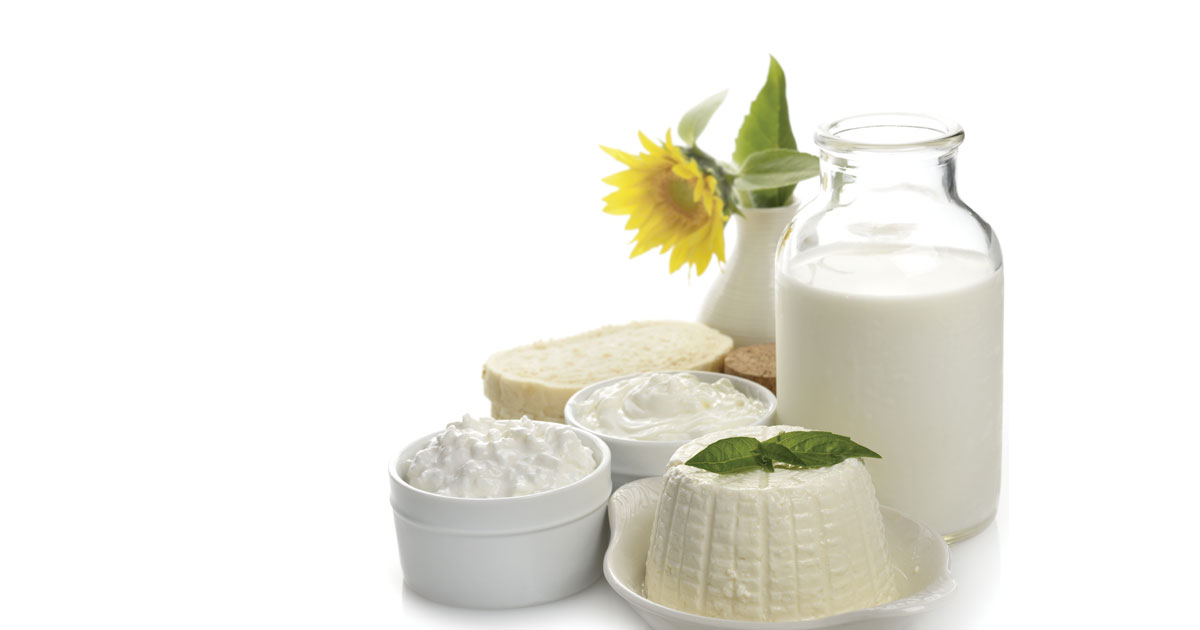Milk. Cheese. Yogurt. These are just a few of the delicious dairy staples that we all turn to when craving something rich and creamy. Lucky for dairy lovers, these yummy items also provide many benefits. For years, it has been well known that dairy products, such as milk, provide nutritional elements from which all can benefit. According to an article from Healthline.com, “The nutritional composition of milk alone is highly complex, and it contains almost every single nutrient that the human body needs.” Considering that this dairy product in particular contains so many vital nutrients—vitamins A and D—it is easy to see why so many foods include some form of milk product. Especially since vitamins A and D are vital when it comes to having strong bones and a healthy body. From the elderly to toddlers, today the modern diet is filled with delicious dairy items sure to satisfy all cravings.
Senior citizens can reap countless benefits, including having a lower risk of developing osteoporosis. According to the article, “4 Reasons for the Elderly to Drink Milk,” one cup of nonfat milk has about 300 mg of calcium—that’s almost half the recommended daily intake for seniors. Dairy products can also be a good source of potassium for seniors, which can help lower blood pressure.
Children over the age of one year can also benefit from dairy products, specifically milk. Whole milk provides fat, which can give youth the energy they need to grow. Milk is also high in calcium, which is important for growing bones and teeth. Calcium is also easily absorbed into the body from milk, rather than from other vegetable foods.
Since dairy products are such crucial elements of the modern diet for so many reasons, this June join the Dairy Alliance’s month long celebration. Since 1939, “June Dairy Month” has encouraged families to make milk the beverage of choice. The celebration started out as a way to distribute extra milk during the warm months of summer. The official honor was established in 1937 by grocer organizations sponsoring “National Milk Month.” By 1939, June became the official “dairy month.”
More than 75 years since the annual celebration began, June Dairy Month continues to recognize not just the dairy products, but also the farmers who produce them. According to the Midwest Dairy organization, “Dairy farmers work hard to minimize their impact on the environment, consistently focusing on recycling practices so that they use as little water and energy as possible in the daily management of their farms.” With this said, “June is a time when we can show our appreciation for the 7,400 dairy farm families in the Midwest,” says Midwest Dairy Association CEO, Lucas Lentsch. “Dairy farmers demonstrate the highest commitment to producing nutritious milk while protecting the land on which they live and work, as well as fund research that leads to dairy product innovation.”
Whether it is in coffee, ice cream, cereal or yogurt, simply adding one more servings of milk to your family’s day can help ensure they get the nutrients they need to build strong bones and teeth. Read on for a few easy tips on how to add more dairy to your regular diet.
Tip # 1: Avoid fatty dairy products:
Avoid drinking whole milk. Instead, try fat-free (skim) or low-fat (1%) milk. If you currently drink whole milk, you can try gradually switching to lower fat versions. This change cuts saturated fat and calories, but does not reduce calcium or other essential nutrients.
Tip #2: Start your day with a smoothie:
One of the simplest recipes only requires milk and fruit. Mix 1/2 cup (125 mL) fresh or frozen strawberries, peaches or banana chunks in a blender, with 1 cup (250 mL) milk, and 5 – 6 ice cubes. Blend for 20 seconds. Note: Omit the ice cubes if you are using frozen fruit.
Tip #3: Swap out the coffee for a latte:
Swap your regular coffee for a café latté, since the hint of milk you might add to regular coffee is far from the recommended serving of 250 mL (1 cup). Most add just a splash of milk in their regular coffee, meanwhile a café latte (which literally translates to coffee milk) is made from 1/3 espresso, approximately 2/3 hot milk, and a layer of foamed milk.
Tip #4: Add a sprinkle of dairy:
Try using fat-free or low-fat milk on cereal and oatmeal. Add zest to fruit salads and baked potatoes, with low-fat yogurt instead of higher fat toppings such as sour cream.
Tip #5: Finish off with dairy:
Finish your meals in style with a delicious piece of cheese served with fresh fruit (apple, pear, melon). Add elegance with a glass of wine.






















